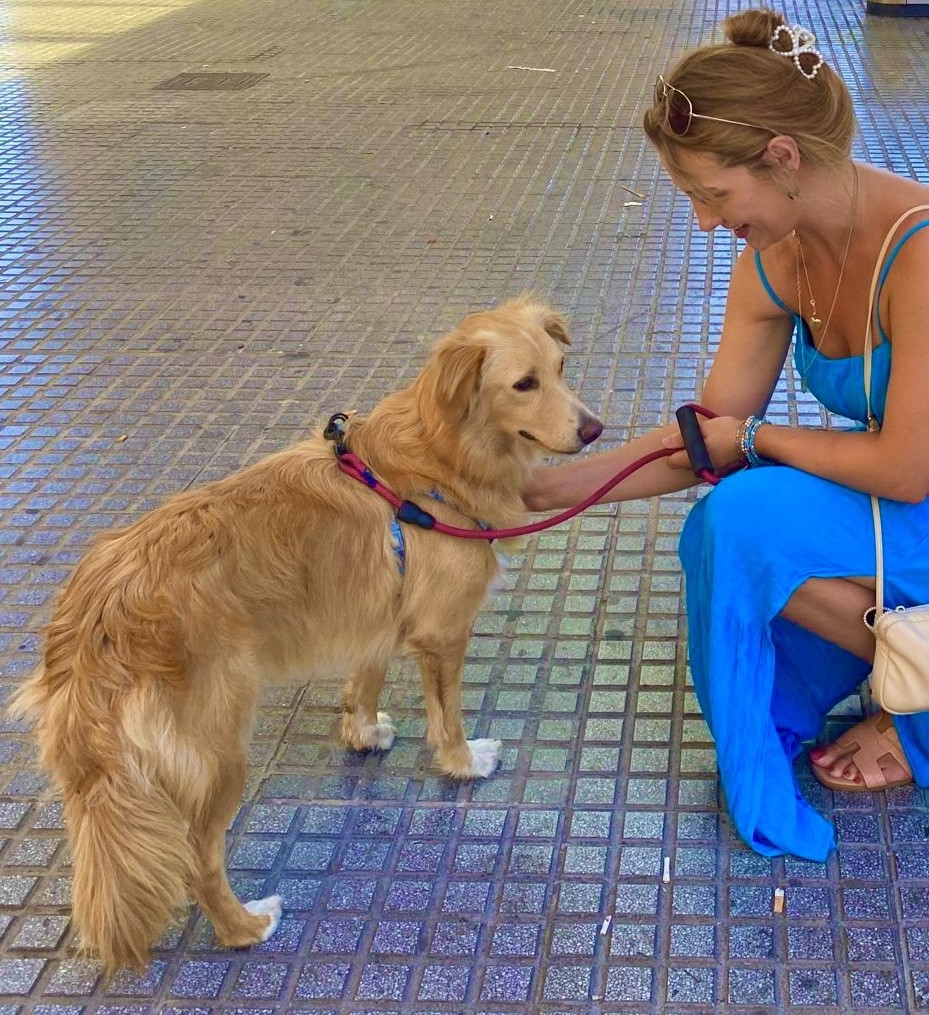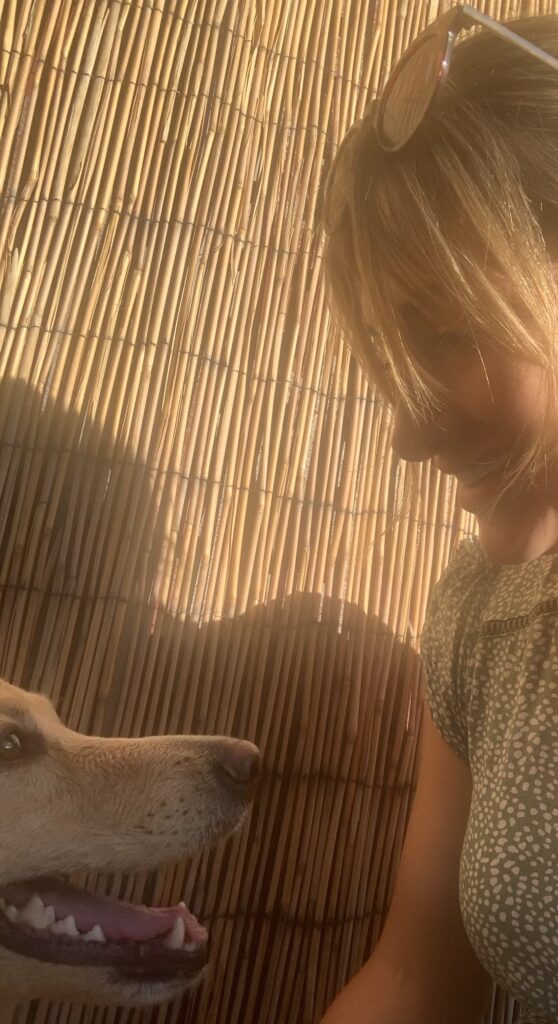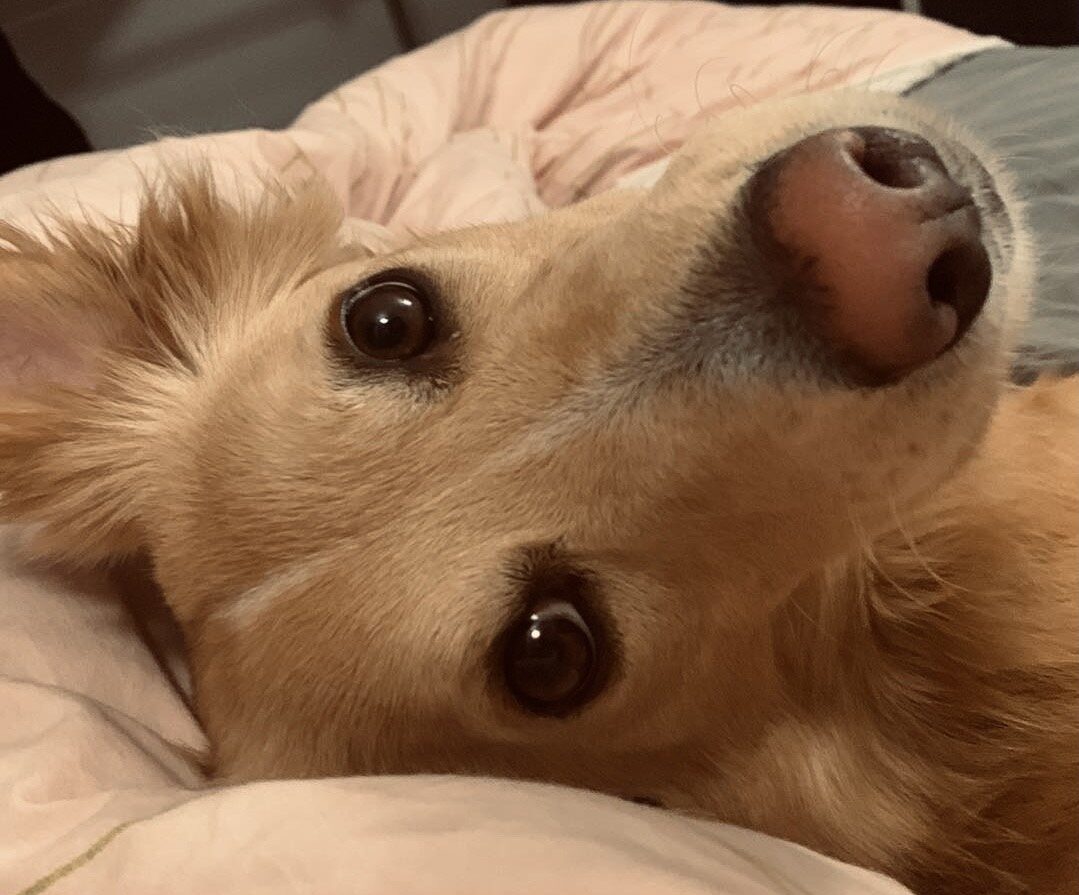Adopting Rocket, my two-year-old rescue dog, has been one of the most rewarding decisions I’ve ever made. Having had two previous owners, Rocket came into my life 10 months ago with emotional scars and trust issues. I’ve learned a lot throughout our journey together, and looking back, I can see how far we’ve come. Our time together has been filled with ups and downs, but the bond we’ve built makes it all worthwhile. Here’s a look at what I’ve learnt along the way.
Lesson 1: Patience from Day One
I had naively expected that Rocket would understand that he was coming to live with me, forever. Now that I look back at photos I can see that he was anxious and wary of me.
In the initial weeks and months Rocket would follow me around the house. I thought this was a sign of comfortability with me. Now, 10 months later I see that he is far more relaxed. It seems that his initial compulsion to follow me was driven by insecurity as opposed to attachment. Rocket can now continue to rest in his bed whilst I move around upstairs and downstairs. He knows that wherever I go, I’ll be coming back.

*Photo taken on the date of adoption 🙂
Lesson 2: Creating a Safe Space
To allow Rocket to retreat and rest I have always respected his ‘safe space’. It gave him a sense of security knowing he had a spot to call his own. Rocket’s bed was placed next to my bed and he has a mat and toys downstairs, close to where I work from home. Whichever spot he chooses to rest in, I have never approached him or disturbed him. I also soon noticed that Rocket often liked to take himself underneath the sofa and my bed. Still to this day, those are his preferred spots in the house, particularly on those warmer summer days.
Lesson 3: Sticking to a Routine
Establishing a consistent routine was crucial. I made sure Rocket had regular feeding times, walk schedules, and play sessions. This consistency helped him know what to expect each day, reducing his anxiety and helping him settle in. It also reinforced my role as his caregiver, someone he could rely on for his needs.
Lesson 4: Positive and Gentle Interactions
Building trust with Rocket meant interacting with him in gentle and positive ways. There are many aspects to Rocket’s past that I will never know but his previous foster carer had alluded to the fact that Rocket is wary when adults make sudden movements. I used a soft voice, slow movements, and lots of treats and praise to encourage good behavior. Harsh words or actions were off the table; they would only set us back. Instead, I focused on creating positive experiences for him.
Lesson 5: Slow and Steady Socialization
Rocket had (still has..) a lot of fears, especially around new people and other leased dogs. Short, controlled interactions with new people and dogs helped him learn that not everyone was a threat. It has been important for me to understand how Rocket feels in different scenarios. Now that Rocket is settled in the home with me, he is very comfortable when friends visit the home.
Lesson 6: Respecting His Past
Understanding and respecting Rocket’s past was essential. He has specific triggers, like loud noises and sudden movements, likely from his previous experiences. I would recommend asking as many questions as possible about your rescue dog’s past
Lesson 7: Training with Kindness
Training Rocket is an ongoing process that has required compassion and patience. I use positive reinforcement, rewarding him with treats and praise for good behavior. This approach not only taught him new skills but also reinforced our bond. Mental enrichment has also been important, being part border collie, Rocket needs to mentally challenged and enjoys being taught new tricks.
Lesson 8: Reading His Body Language
Learning to read Rocket’s body language was hugely important. I became attuned to his signals of stress, fear, and happiness. Understanding these cues allowed me to respond appropriately to his needs which included giving him space when I felt that he was asking for it.
Lesson 9: Quality Time Together
Spending quality time with Rocket through activities he enjoyed was crucial. Whether we were playing fetch on the terrace, having quiet cuddle sessions, or going for long walks, working on training and tricks, these moments strengthened our bond. They provided mental stimulation for Rocket and solidified our relationship.
Lesson 10: Seeking Professional Help
Consulting a professional trainer has been my best decision. This being said, I tried 2 dog trainers before finding the perfect trainer for us. Our current trainer has really helped me to understand Rocket’s specific needs and we continue to work together to continue to build Rocket’s confidence outside the home.
Each day, Rocket shows more trust and affection, and our bond grows stronger. Adopting him may have come with challenges, but the joy and companionship he brings to my life are immeasurable.

Frequently Asked Questions (FAQs)
1. How long does it take for a rescue dog to trust a new owner?
The timeline for building trust with a rescue dog can vary significantly depending on the dog’s past experiences, temperament, and your approach. While some dogs may start to trust you within weeks, others might take several months or even longer. Patience is key, and it’s important to let the dog set the pace.
2. Can I speed up the trust-building process with my rescue dog?
While you can’t rush trust, you can certainly create an environment that promotes it. Be consistent, use positive reinforcement, and respect your dog’s boundaries. However, remember that trust-building should always be a gradual and gentle process.
3. What if my rescue dog has behavioral issues or fears?
Many rescue dogs come with behavioral challenges or fears due to their past experiences. Consulting with a professional dog trainer or behaviorist can be immensely helpful. They can provide guidance on addressing specific issues and building trust in a safe and structured manner.
4. Is it okay to adopt a rescue dog if I have other pets at home?
Yes, it’s possible to adopt a rescue dog when you have other pets, but it requires careful planning and introductions. Always consider your existing pets’ personalities and how they might react to a new addition. Slow and supervised introductions are crucial to ensure a harmonious transition.
5. What if my rescue dog is shy or anxious around people?
Shy or anxious dogs may need extra time and care to build trust. Avoid overwhelming them with too many people or new experiences initially. Gradual exposure and positive associations with people can help them become more comfortable over time.
6. How do I handle separation anxiety in my rescue dog?
Separation anxiety is common in rescue dogs, especially those who’ve experienced abandonment. Gradual desensitization to being alone, using crate training, and seeking guidance from a professional can help manage and reduce separation anxiety.
7. Are there any specific breeds or age groups of rescue dogs that are easier to build trust with?
Trust-building can be equally rewarding with dogs of all breeds and ages. It’s more about the individual dog’s personality and past experiences than their breed or age. Some older dogs may have a stronger desire for companionship, while younger ones may be more adaptable.
8. What should I do if my rescue dog shows signs of aggression or fear-based aggression?
If your rescue dog exhibits signs of aggression, it’s essential to prioritize safety. Consult with a professional dog trainer or behaviorist immediately. They can assess the situation, recommend appropriate training techniques, and help you manage and modify aggressive behaviors safely.
9. How can I ensure a smooth transition for my rescue dog into my home?
A smooth transition involves creating a consistent routine, providing a safe space, and giving your dog time to adjust. Remember that patience, positive reinforcement, and a calm environment are your best allies in ensuring your rescue dog feels secure and loved in their new home.
10. What are some signs that my rescue dog is starting to trust me?
Signs that your rescue dog is beginning to trust you can include increased comfort around you, wagging their tail, seeking physical contact or affection, and showing relaxation in their body language. These positive behaviors indicate that your bond is growing stronger.

